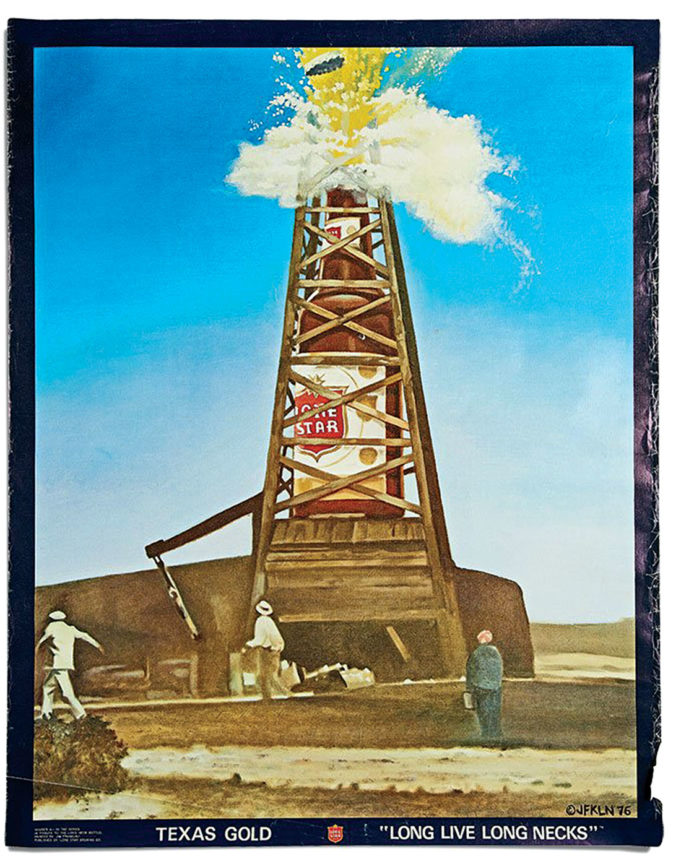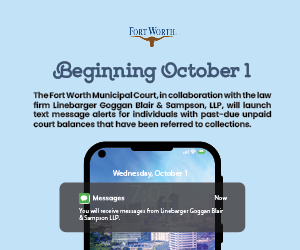Every so often, beer marketers create a campaign so unforgettable it captures the imagination of a generation. Remember the “whassuuup” Budweiser commercials? Many Bud cans have been crumpled since that TV ad became the hit of the 2000 Super Bowl. To this day, you could walk into any crowded elevator and say, “Whassuuup,” and half the people would understand the reference. (I’m not recommending you do this. Even the half who gets it will think you’re a dipshit.)
The Most Interesting Man in the World campaign has remained so popular since its 2007 debut that Dos Equis had to replace the original actor –– similar to how TV producers for Lassie (1954-1974) had to keep trotting out younger collies.
I can testify to the power of a brilliant beer campaign. Forty years ago, Lone Star Beer came up with a blitz that continues to influence my wants and needs in good and bad ways.
Right now, it’s pissing me off.
I turned a legal drinking age in the mid-1970s. At the time, I was a longhaired music freak infatuated with the exploding Outlaw country movement led by Willie Nelson, Waylon Jennings, and Jerry Jeff Walker. I noticed many of those guys drank Lone Star longnecks. They helped turn that brand of suds into the “National Beer of Texas,” as one of those early marketing campaigns declared.
What few people knew at the time was that Nelson had struck a quid-pro-quo deal with the San Antonio-based brewer. Nelson’s road crew was drinking mass quantities of beer and running up expenses on tour, and so Lone Star would provide beer to the crew for free if Nelson and friends would be seen slurping its longnecks onstage and in photos. Nelson was too cool to do commercials, and the casual arrangement made everyone happy without the Outlaw singer having to blatantly shill a product.
Lone Star’s connection to Nelson led to numerous offshoots, each burning the infamous beer brand deeper into my essence. Radio ads featuring David Allen Coe and others preached the zen of Lone Star. Cool songs popped up, such as Red Steagall’s “Lone Star Beer and Bob Wills Music.” Cosmic cowboy Michael Murphey sang about “Lone Star sippin’ and skinny dippin’.” The company was a major underwriter for the early seasons of Austin City Limits, the PBS live concert show that became beloved almost instantly. Lone Star bumper stickers with “Long Live Longnecks!” began appearing on pickup trucks statewide, including mine.
Nelson put Lone Star on my radar, but it was Jim Franklin who seared the brand into my soul. Franklin was king of the concert posters. The Austin-based illustrator created the coolest poster art around and pretty much made armadillos synonymous with Outlaw music and counter-culture lifestyles. Lone Star hired Franklin to create ad designs, and the artist cranked out some doozies. The ads would appear in music magazines, calendars, and elsewhere and did much to make Lone Star my brew of choice in those heady years.
I can still visualize one of those ads all these years later – a giant Lone Star longneck encased inside a drilling rig with a cascade of golden beer spewing from the top like an oil gusher.
The drinking age was 18 back then, and I became a Lone Star longneck fan from Day 1. They were easy to find, inexpensive to buy, and tasted wonderful to my unsophisticated tongue. Over the years, however, my thirst and capacity for beer grew to such epic proportions that I began buying even cheaper brands, such as Pearl or Old Milwaukee. And instead of being content with six longnecks to catch a buzz, I began needing 15 to 20. Drinking longnecks at that rate meant my trashcans were heavily weighted down with loud, cumbersome, breakable bottles. I switched to cans sometime in my 20s.
Lately, I’ve weaned myself off booze. Now, I drink on rare occasions only and never more than two or three beers in a sitting. I no longer drink to get drunk. I don’t shop for value. I don’t worry about peer pressure. I drink what I want, when I want, and that’s it. And all I want is the beer of my youth – a Lone Star longneck in the brown bottle with the cool red-and-gold label and chilled in real ice.
Lone Star longnecks make me happy and nostalgic. I love the feel of the cold, thick glass on my lips. I like the narrow circumference of the bottle and the even narrower neck to grab hold of. I love opening an ice chest and seeing nothing but the tops of a few longnecks sticking above a mound of ice, waiting to be plucked and consumed while little flecks of melting ice drift slowly down the bottle and into my hand.
Here is why I’m pissed off: It is becoming more and more difficult to find Lone Star in longnecks. About two years ago, the convenience store by my house dropped the longnecks and started selling Lone Star in cans only. I began buying the beer at my grocery store, which soon switched to cans only as well. The same thing has happened at my favorite bars, such as Lola’s Saloon and MASS. They sell Lone Star in cans only now. Any child of the 1970s can attest that drinking Lone Star from a can is downright sacrilege.
Children of the nowsies, however, seem to prefer cans, as do the craft brewers. Cans keep out sunlight, resulting in a fresher-tasting brew. Cans are easy to recycle. Cans require fewer production and packaging costs. Cans don’t break and are often allowed poolside and other places that eschew bottles.
“Cans are where it’s at,” said Brian Forella, owner of Lola’s Saloon and Lola’s Trailer Park. “It’s just easier.”
Longneck aficionados like me are beginning to resemble the Lone Star mascot – primitive dinosaur-looking creatures who appear out of place in a modern world.
We’re not dead. Yet.












